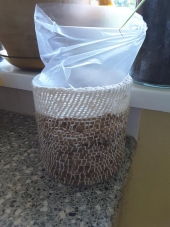





 16
16











 4
4




 3
3




"The only thing...more expensive than education is ignorance."~Ben Franklin
"We can easily forgive a child who is afraid of the dark; the real tragedy of life is when men are afraid of the light." ~ Plato
 7
7




The best place to pray for a good crop is at the end of a hoe!

 12
12




 3
3




"The only thing...more expensive than education is ignorance."~Ben Franklin
"We can easily forgive a child who is afraid of the dark; the real tragedy of life is when men are afraid of the light." ~ Plato
 5
5




 2
2




John Duffy wrote:Christopher, nice hat for sure! Whatever ya do, don't wash that rascal in anything but cold water or it will fit a GI Joe doll. Wool is wonderful stuff but, it'll shrink in a heart beat if you're not careful
"The only thing...more expensive than education is ignorance."~Ben Franklin
"We can easily forgive a child who is afraid of the dark; the real tragedy of life is when men are afraid of the light." ~ Plato
 14
14





"Also, just as you want men to do to you, do the same way to them" (Luke 6:31)
 3
3




 7
7




Morana Revel wrote:I have several horns in saving to make needles with and other wool tools. I was just chasing with someone on reddit lay well about where she got her needles from.
"The only thing...more expensive than education is ignorance."~Ben Franklin
"We can easily forgive a child who is afraid of the dark; the real tragedy of life is when men are afraid of the light." ~ Plato
 4
4




Visit Redhawk's soil series: https://permies.com/wiki/redhawk-soil
How permies.com works: https://permies.com/wiki/34193/permies-works-links-threads
 5
5




"Ah, but a man's reach should exceed his grasp,
Or what's a heaven for?"
Andrea del Sarto by Robert Browning
 2
2




"The only thing...more expensive than education is ignorance."~Ben Franklin
"We can easily forgive a child who is afraid of the dark; the real tragedy of life is when men are afraid of the light." ~ Plato
 5
5




"Ah, but a man's reach should exceed his grasp,
Or what's a heaven for?"
Andrea del Sarto by Robert Browning
 1
1




"The only thing...more expensive than education is ignorance."~Ben Franklin
"We can easily forgive a child who is afraid of the dark; the real tragedy of life is when men are afraid of the light." ~ Plato
 13
13




He whai take kore noa anō te kupu mēnā mā nga mahi a te tangata ia e kōrero / His words are nothing if his works say otherwise










Christopher Shepherd wrote:Here is the hat that was made for me"
Was this hat knitted? Or made with nalbinding?
Being weird is easy. Making it mainstream is hard. Be brave! https://www.youtube.com/@healthygreenbrave




Rebekah Harmon wrote:
Christopher Shepherd wrote:Here is the hat that was made for me"
Was this hat knitted? Or made with nalbinding?
It was knitted.
"The only thing...more expensive than education is ignorance."~Ben Franklin
"We can easily forgive a child who is afraid of the dark; the real tragedy of life is when men are afraid of the light." ~ Plato






 4
4




Kevin Olson wrote:In the second video above, he mentions knotting the short lengths together. It is my understanding that a "spit splice" was commonly employed for woolen goods made by nail binding (basically, felting the frayed ends together, with saliva or otherwise), which didn't result in the textural additions to the finished article occasioned by a bazillion knots. Other fibers (cotton and linen) probably would require knotting, unless some analogous and more labor intensive long splice were to be used, since they don't felt the same as wool. ..
"Also, just as you want men to do to you, do the same way to them" (Luke 6:31)






 10
10




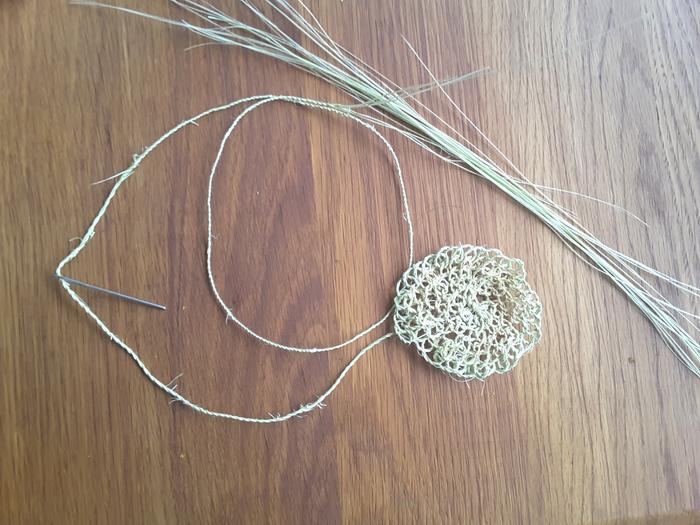
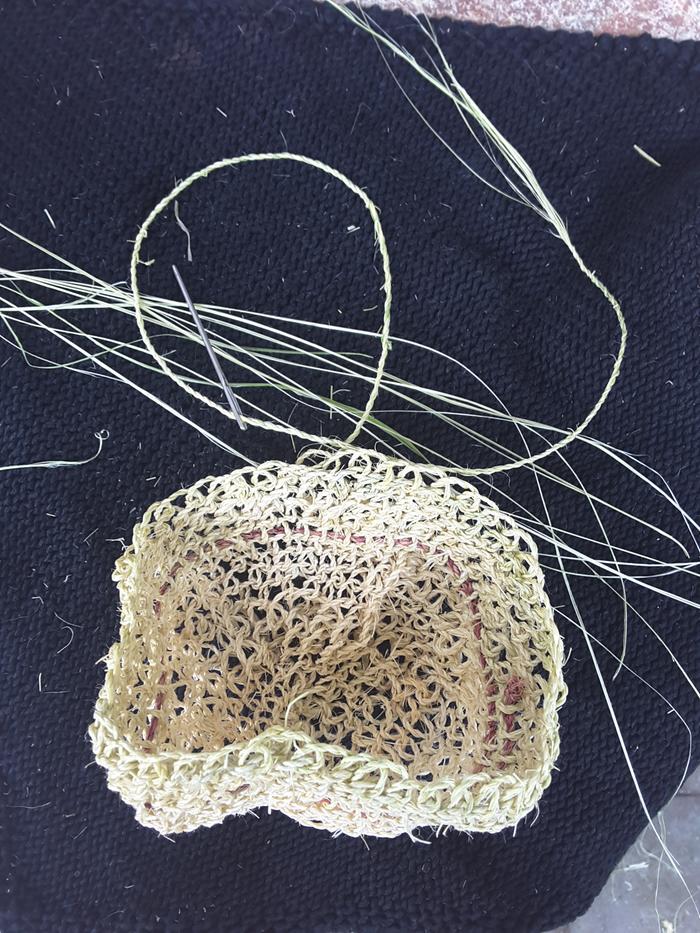
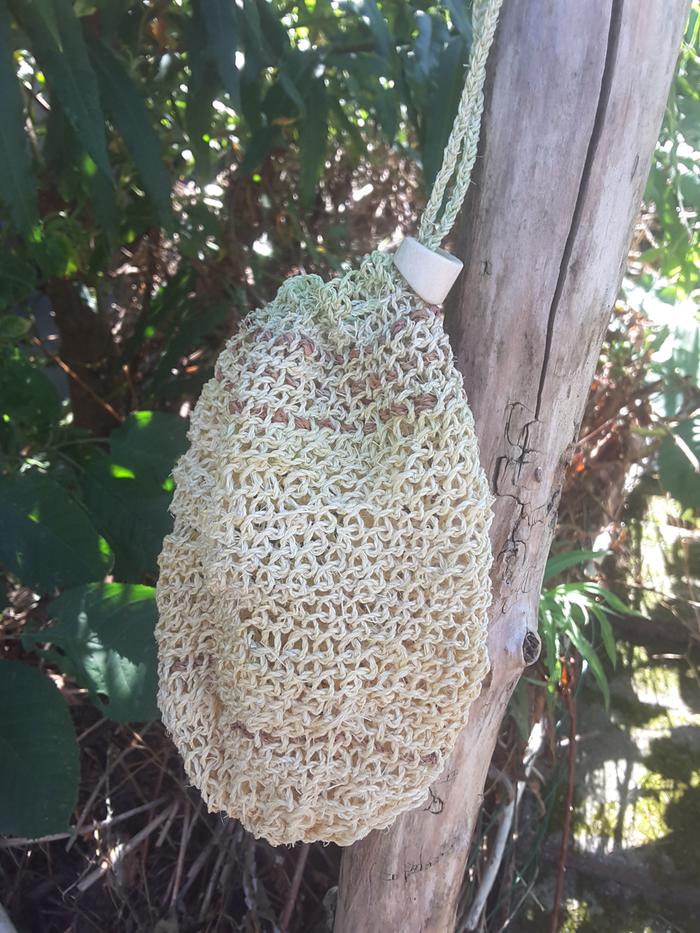
"Also, just as you want men to do to you, do the same way to them" (Luke 6:31)






 2
2




"Also, just as you want men to do to you, do the same way to them" (Luke 6:31)
 2
2




"The only thing...more expensive than education is ignorance."~Ben Franklin
"We can easily forgive a child who is afraid of the dark; the real tragedy of life is when men are afraid of the light." ~ Plato
 3
3




I've never tried nalbinding. Do you know if there are any length/shape/width/thickness of the needle parameters you'd suggest for a total newbie?M Broussard wrote:I'd encourage anyone who's keen to make a nalbinding needle to give it a go! I've made heaps by carving wood and bone.
No shortage of Ivy around my home. I think that would be a better first choice for me than bone. Thank you for the suggestion!Ivy is actually a great wood to make nalbinding needles from as it's quite strong and resistant to checking. The shiny wooden needle with a large eye is ivy. Most of the rest are gorse or scotch broom. The bone ones are made from deer bone from a hunter friend of mine.
Visit Redhawk's soil series: https://permies.com/wiki/redhawk-soil
How permies.com works: https://permies.com/wiki/34193/permies-works-links-threads
 7
7




Jay Angler wrote:I've never tried nalbinding. Do you know if there are any length/shape/width/thickness of the needle parameters you'd suggest for a total newbie?
Does the fabric you will be nalbinding with affect that choice, or the stitch you plan on using?
No shortage of Ivy around my home. I think that would be a better first choice for me than bone. Thank you for the suggestion!
He whai take kore noa anō te kupu mēnā mā nga mahi a te tangata ia e kōrero / His words are nothing if his works say otherwise
 4
4




"The only thing...more expensive than education is ignorance."~Ben Franklin
"We can easily forgive a child who is afraid of the dark; the real tragedy of life is when men are afraid of the light." ~ Plato
 5
5










 5
5




Carla Burke wrote:Inge, is there a distinction there, in the definitions of 'looping' and 'nålbinding'? I ask because your bags look like what I've seen called 'looping', here. I read (somewhere...?) that looping predates what we now call 'nålbinding', 'nålebinding', or 'needle binding', but I know sometimes meanings of words get changed over both time and ocean crossings.
"Also, just as you want men to do to you, do the same way to them" (Luke 6:31)






 6
6




"Also, just as you want men to do to you, do the same way to them" (Luke 6:31)
 3
3




"The only thing...more expensive than education is ignorance."~Ben Franklin
"We can easily forgive a child who is afraid of the dark; the real tragedy of life is when men are afraid of the light." ~ Plato






 4
4




Carla Burke wrote:Thank you, Inge! That makes sense - so looping is nålbindin g, but nålbinding is the umbrella type name. Sometimes, it really is difficult to get a full understanding, even in this ETA of information - from these distances. It's nice to find help across time lines and oceans!
"Also, just as you want men to do to you, do the same way to them" (Luke 6:31)
 7
7




Carla Burke wrote:My wooden ones, on the other hand, vary even more, in length, girth, and shape. They're nice to touch, and sanded well - but still drag more than is comfortable, and cause me to need a firmer grip, to use them. That firmer grip means my hands tire and ache MUCH faster, so I tend to reject them. The biggest of the bunch is one I'd likely use more for larger netting projects, and the curved one, I think would be amazing, in bone or horn, but just ISN'T, in this wood. At least not as it is. I'm not sure what type of wood is made of - I'm pretty sure they were all laser cut, but I've decided I'm going to take all my wooden ones, and see if they'll sand out any smoother, and maybe polish them with wood conditioner, then warm them to soak it in, then leather/ rinse/ repeat, until I get the smoothness I'm looking for with no residue that could mess up my wool.
Of course, these are my novice experiences and thoughts. If anyone can point me in a better direction, I'm all ears!
He whai take kore noa anō te kupu mēnā mā nga mahi a te tangata ia e kōrero / His words are nothing if his works say otherwise
 5
5




"The only thing...more expensive than education is ignorance."~Ben Franklin
"We can easily forgive a child who is afraid of the dark; the real tragedy of life is when men are afraid of the light." ~ Plato
 9
9




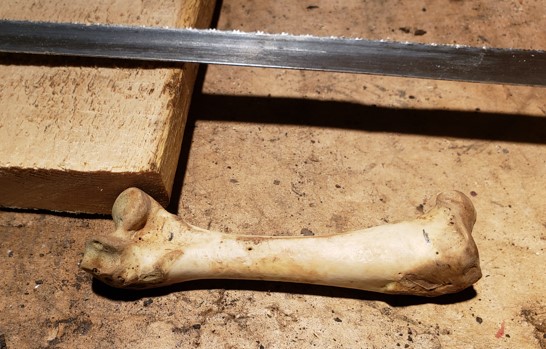
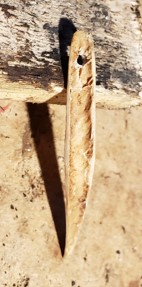
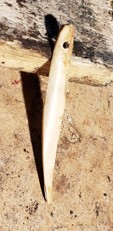


Visit Redhawk's soil series: https://permies.com/wiki/redhawk-soil
How permies.com works: https://permies.com/wiki/34193/permies-works-links-threads






 4
4




Jay Angler wrote:...
Do you have any recommendation of an easy stitch or tutorial for a total newbie with a unique needle? Maybe post that over on the thread I linked to?
"Also, just as you want men to do to you, do the same way to them" (Luke 6:31)
 7
7




He whai take kore noa anō te kupu mēnā mā nga mahi a te tangata ia e kōrero / His words are nothing if his works say otherwise
 2
2




"The only thing...more expensive than education is ignorance."~Ben Franklin
"We can easily forgive a child who is afraid of the dark; the real tragedy of life is when men are afraid of the light." ~ Plato
 5
5




Visit Redhawk's soil series: https://permies.com/wiki/redhawk-soil
How permies.com works: https://permies.com/wiki/34193/permies-works-links-threads




Inge Leonora-den Ouden wrote:
Jay Angler wrote:...
Do you have any recommendation of an easy stitch or tutorial for a total newbie with a unique needle? Maybe post that over on the thread I linked to?
The needle-binding I do is all only the 'simple looping' that was already used in the Stone Age.
There are some video-tutorials by Donna Kallner (she calls it 'new age looping'), like this one:
Sally Pointer has some very interesting and fun videos on it too (and on many other prehistoric techniques):
 2
2




Carla Burke wrote:
Something I'm noticing though, is that- at least for me - there seems to be a fine line between too much drag, and too smooth. The horn one is so dang smooth - like glass - that I struggle to hang onto it. But, the new bone one is perfect. The longer length of the needles also makes it easier, for my crippled up hands to maneuver. With the horn one, not only is it hard to hang onto, but it's so short, I kept jabbing myself in the web between my thumb and palm, instead of being able to maneuver it past there.

|
Don't destroy the earth! That's where I keep all my stuff! Including this tiny ad:
montana community seeking 20 people who are gardeners or want to be gardeners
https://permies.com/t/359868/montana-community-seeking-people-gardeners
|


